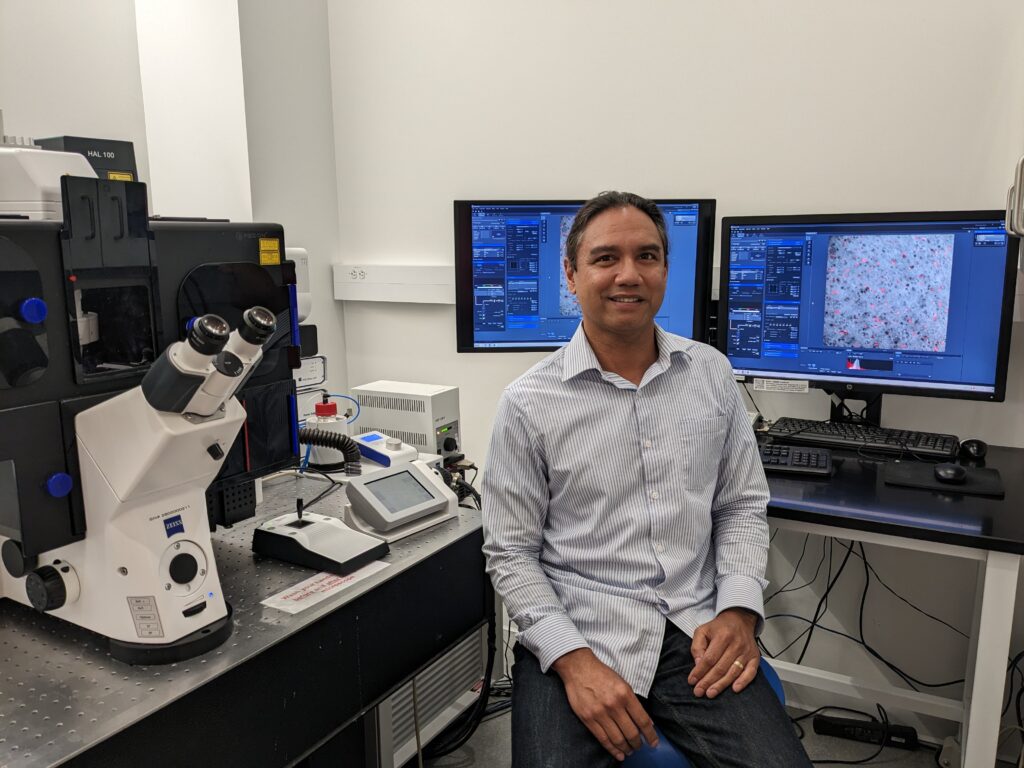Alumni Spotlight – Chandran Sabanayagam

Dr. Chandran Sabanayagam was an undergraduate student as well as a Masters student in the WFU Physics program. Dr. Sabanayagam was advised by Professor George Holzwarth for his masters and went on to obtain his PhD in Biochemistry and Molecular Biology at Boston University. This interview, conducted by Professor Jed Macosko, highlights the relationship Dr. Sabanayagam has with the Physics department here and how it impacted his career.
Professor Macosko: What are you currently doing?
Dr. Sabanayagam: I am a full-time researcher at the Delaware Biotechnology Institute, part of the University of Delaware. I train scientists on how to use state-of-the-at light microscopes and atomic force microscopes. I frequently collaborate with faculty members when their research requires expertise in quantitative microscopy, or help with math and physics. I also run a space research lab. We designed a microgravity simulator to understand how biology adapts to the space environment using a model organism, C. elegans (a microscopic worm) and sequencing its genetic material after being in the simulator. Our group also designs instruments to look for evidence of past or present life beyond Earth. My hope is to someday send one of our experiments into space!
Professor Macosko: What did you do after Wake Forest?
Dr. Sabanayagam: After receiving my BS in physics, I stayed on for another two years to earn my MS degree in George Holzwarth’s biophysics lab. By then I was hooked on research, especially at the interface between physics, biochemistry and biology. I went on to earn my PhD in biochemistry and molecular biology at Boston University. I did a postdoc at The Rowland Institute at Harvard, which was a particularly interesting place to be. It was founded by Edwin Land, a physicist who invented the film polarizer and founded Polaroid Corporation. Basically, it was a think tank… science for the sake of science, no grant writing, unlimited research budget, and a large indoor garden for inspiration. My first faculty position was at the University of Maryland School of Medicine, Department of Biochemistry, then I moved to Delaware State University, Department of Physics where I later became Chair. I found out that I loved doing research, but not so much teaching courses or administration, which brought me to my current position.
Professor Macosko: How did WFU physics help you get to where you are?
Dr. Sabanayagam: I enjoyed taking physics courses and participating in research. I can say, without hesitation, that WFU physics faculty members inspired me to become a university professor.
